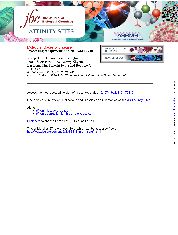摘要
Optineurin is a gene linked to amyotrophic lateral sclerosis, Paget disease of bone, and glaucoma, a major blinding disease. Mutations such as E50K were identified in glaucoma patients. We investigated herein the involvement of ubiquitin-proteasome pathway (UPP) and autophagy, two major routes for protein clearance, in processing of optineurin in a retinal ganglion cell model line RGC5 and neuronal PC12 cells. It was found that the endogenous optineurin level in neuronal cells was increased by treatment of proteasomal inhibitor but not by autophagic and lysosomal inhibitors. Multiple bands immunoreactive to anti-ubiquitin were seen in the optineurin pulldown, indicating that optineurin was ubiquitinated. In cells overexpressing wild type and E50K optineurin, the level of the proteasome regulatory beta 5 subunit (PSMB5, indicative of proteasome activity) was reduced, whereas that for autophagy marker microtubule-associated protein 1 light chain 3 was enhanced compared with controls. Autophagosome formation was detected by electron microscopy. The foci formed after optineurin transfection were increased upon treatment of an autophagic inhibitor but were decreased by treatment of an inducer, rapamycin. Moreover, the level of optineurin-triggered apoptosis was reduced by rapamycin. This study thus provides compelling evidence that in a normal homeostatic situation, the turnover of endogenous optineurin involves mainly UPP. When optineurin is up-regulated or mutated, the UPP function is compromised, and autophagy comes into play. A decreased PSMB5 level and an induced autophagy were also demonstrated in vivo in retinal ganglion cells of E50K transgenic mice, validating and making relevant the in vitro findings.
- 出版日期2011-2-4
